
views
Meeting the Basic Requirements

Earn your bachelor’s degree. If you plan on embarking on a career as a combat aviator, your first step will be to complete a 4-year degree program at an accredited university. Fighter pilot is an officer position, and all officers in the U.S. military must hold a minimum of a bachelor’s degree. Your degree can be in any subject of your choosing. However, fields of study like engineering, physics, mathematics, geography, and meteorology will translate especially well to the kind of duties you’ll be performing as a pilot. It’s a good idea to enroll at your earliest convenience to give yourself plenty of time to meet your academic requirements, especially if you’ll be also be working while you’re in school.Tip: If you’re unable to afford school on your own, investigate whether you might be eligible for a scholarship, or consider taking advantage of degree or tuition reimbursement programs offered through the military.
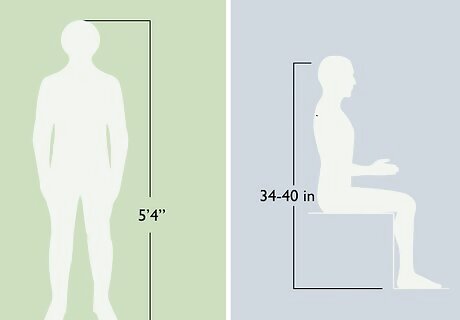
Make sure that you fall within the average required height range. In order to pilot military aircraft safely and comfortably, all cadets must have a standing height between 5’4” (163 cm) and 6’5” (196 cm), and a sitting height of 34–40 in (86–102 cm). While being outside of this range isn’t necessarily grounds for dismissal, you may be asked to report for additional screenings to prove that your stature won’t be a liability during training or operations. Follow-up screenings typically involve physical examinations and tests designed to show that you’re built to operate aircraft safely.
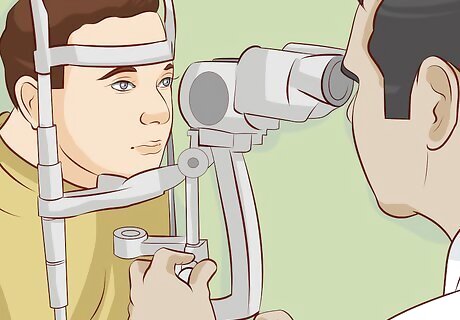
Be able to meet the military’s rigorous vision requirements. The U.S. Armed Forces have notoriously high standards when it comes to the vision of prospective fighter pilots. Not only must candidates possess near 20/20 vision uncorrected, they must also be able to pass several difficult tests that gauge their visual acuity, object recognition, depth perception, and reaction time. Even common sight defects such as partial color blindness or astigmatism could be enough to disqualify you and put an end to your journey before it begins. In rare cases, it may be possible for your commanding officers to request a waiver if they think that you’d be a good candidate for a pilot position despite testing below standard for vision. Keep in mind that it could take several months for your waiver to be approved.
Completing the Necessary Testing

Enlist in your chosen branch of the Armed Forces. If you haven’t done so already, call or visit your local recruitment office to talk to a recruiter about getting your start. You can also apply online on the official website of the branch you’re interested in joining. The recruiter will schedule a time and date at which you’ll be expected to report to a nearby Military Entrance Processing Station (MEPS) for evaluation. All 5 branches of the U.S. military train and employ pilots for various types of air missions. However, the majority of combat initiatives are carried out by the Air Force and the Navy. Joining the military is a big commitment, one that comes with a high degree of responsibility and potential risk. Take some time to consider your options in-depth before coming to a decision.
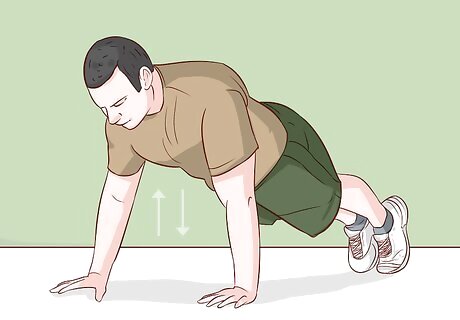
Take and pass the Physical Fitness Test (PFT) for your branch of service. After completing your enlistment paperwork and undergoing a thorough medical check-up, you’ll be subjected to a series of physical challenges designed to test your basic level of fitness. PFTs differ between the various branches, but most include some combination of push-ups, pull-ups, and sit-ups, as well as running and swimming set distances. If you plan on becoming a Marine, you’ll need to retake your PFT every 6 months to ensure that you’re staying in peak condition. You can start preparing for your PFT in advance by doing things like building your endurance and performing calisthenics exercises regularly.
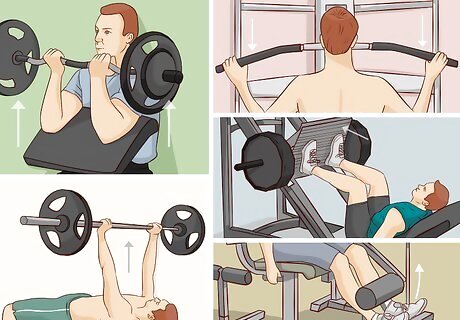
Make it through the Fighter Aircrew Conditioning Test (FACT). In order to pass the FACT, you must complete a minimum of 50 total repetitions across 5 different strength exercises: the bench press, arm curl, lat pull, leg press, and leg curl. You also need to be able to perform between 20 and 50 reps each of push-ups, leg curls, and abdominal crunches as part of a separate endurance component. The resistance added to each exercise in the strength component is a factor of your individual body weight. To figure out how much weight you’ll be expected to bench press, for example, you would multiply your weight by 0.8. The FACT is a separate physical exam administered specifically to pilots. The exercises that comprise it revolve around conditioning the body to withstand high amounts of G-forces in flight.
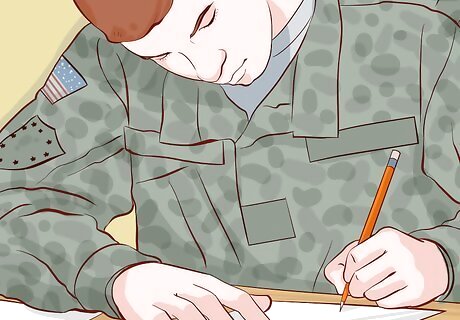
Sit for the ASTB if you’ll be flying for the Navy or Marines. The Aviation Selection Test Battery, or ASTB, is a series of 7 computer-based exams used to assess a candidate’s overall aptitude and knowledge of aviation procedures. The subjects of the tests that make up the ASTB are Math Skills (MST), Reading Comprehension (RCT), Mechanical Comprehension (MCT), Aviation and Nautical Information (ANIT), Naval Aviation Trait Facet Inventory (NATFI), Performance-Based Measures Battery (PBM), and Biographical Inventory with Response Validation (BI-RV). Scoring is grouped into 4 values—1 cumulative score for the MST, RCT, and MCT, which determine your Officer Aptitude Rating (OAR for short), and 3 separate scores for the remaining subjects. If you happen to fail the ASTB on your first attempt, you can retake it up to 2 times. After that, you won’t be permitted to take it again.Tip: Brush up for the ASTB by studying current military manuals and handbooks, as well as aviation encyclopedias and online study guides. The better your scores, the better your chances of being selected for a coveted pilot position.
Undergoing Training and Obtaining Security Clearance
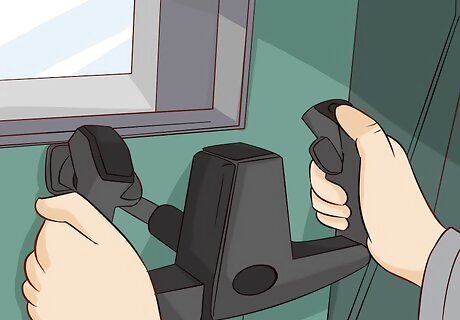
Complete your specialized undergraduate training. If you manage to make it through preliminary testing, you’ll finally be ready to begin your actual training. The Air Force’s Introductory Flight Screening (IFS) is a 40-day program that takes place in both the classroom and the cockpit. It consists of a total of 25 hours of Primary Flying Training (which may or may not include time running flight simulators), along with 58 hours of ground-based education. It’s not necessary to have any independent flight experience prior to beginning your formal flight training. Along with fundamental combat aviation skills, you’ll be learning key support, safety, and emergency protocols and leadership principles, all of which are meant to shape you into the best pilot you can possibly be.Tip: During this time, you’ll be stationed at an Air Force base, naval air station, or army air field, where your training will also be conducted. Plan accordingly in regards to your living arrangements and other practical considerations.
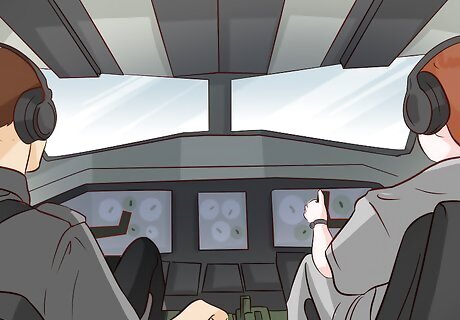
Go on to excel in your advanced flight training. This is where you’ll really develop your chops as a pilot. The course your training takes from this point on will vary depending on your specialization and the branch you’re serving with. As with your specialized undergraduate training, however, your time will still be split between classroom learning, solo flying, and flight simulator sessions. Following your specialized undergraduate training, you’ll be pushed into 1 of 4 advanced training tracks depending on your performance and overall class standing. Different tracts are centered around different aircraft, operation protocols, and aviation skills. Be aware that it could take you anywhere from 14 to 49 weeks to complete your advanced flight training. This makes it one of the most intensive training programs in the entire U.S. military.
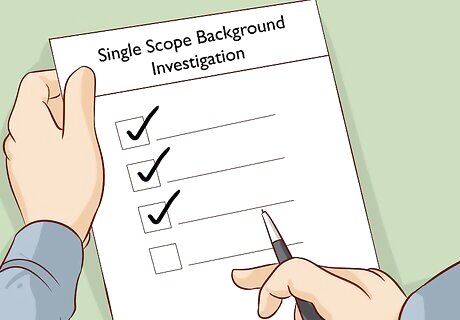
Submit to a Single Scope Background Investigation (SSBI). The SSBI is a type of background check used to vet military and government employees seeking Top Secret security clearance. To apply for the SSBI, you’ll need to fill out and send in an e-QIP package online. Your commanding officer will give you more information about the process once you qualify for clearance. As part of this investigation, officials will look at factors like your citizenship status, education and employment history, and known organizational affiliations. Assuming you make it through the initial phase, they’ll also interview your friends, relatives, and other personal acquaintances. In some cases, SSBI investigators may also run a National Agency Check with Local Agency Check and Credit Check (NACLC) on your live-in spouses or roommates.


















Comments
0 comment